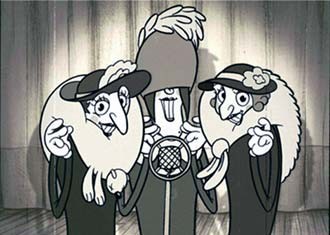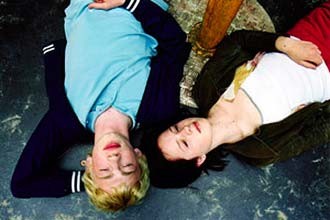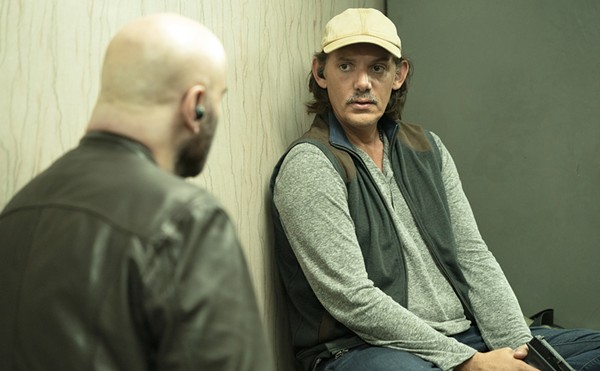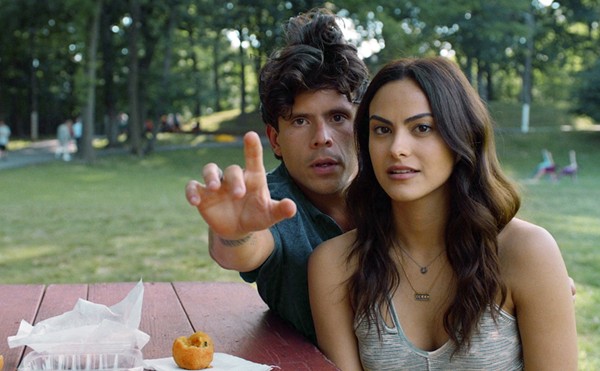A recent film festival reveals a fractious population thriving in the shadow of Hollywood
| Scenes from a changing European film industry: Since Otar Left, by French director Julie Bertucelli. |
On two occasions, I was invited to Peru to curate a festival of films from the United States. Of the tens of thousands of features released in this country, how to choose just six? Once the selections were made, what could I possibly say to introduce the screenings? Could I claim that the six represented the diverse cinema of the United States? Did these films provide Peruvians an accurate picture of life in my country?
"European Cinema in Transition" faced similar challenges. A series of 12 films and three panel discussions sponsored by UTSA and held at the Bijou Theater over four days in late March, it was an ambitious attempt to acquaint San Antonio audiences, ordinarily starved for any foreign film, with the state of the art in four countries: France, Germany, Italy, and Spain. Might those dozen films also acquaint us with the state of life in those four countries? (The consulates of France, Germany, Italy, and Spain, each located in Houston, helped obtain prints; a further sampling from Poland, Britain, Sweden, Greece, Belgium, Switzerland, and Russia might be necessary for an accurate assessment of "European Cinema in Transition"). All 12 films, three each from the four countries, were shown twice, and large and lively crowds testified to the avidity with which many in this city seek alternatives to the usual studio entertainment.
Twenty-five nations now belong to the European Union, and several more, including Bulgaria, Romania, Croatia, and Turkey, are on track to join soon. Yet, despite the elimination of trade barriers and adoption of an integrated currency, few identify themselves as "European," rather than Irish, Latvian, Portuguese, Dutch, Slovenian, or Finnish. Despite the proliferation of co-productions among several countries, is "European film" a nebulous abstraction disguising separate national cinemas?
| The popular and critically acclaimed French animated film The Triplets of Belleville |
American titles dominate theaters within individual European countries. In a typical week, 80 percent of offerings come from the United States. The remaining 20 percent are largely local productions: French films in Paris, German films in Berlin, Italian films in Rome, etc. Works from one European country do not circulate widely among neighboring countries. Italians do not see many German releases, nor are Dutch films shown in Ukraine (The situation is similar in Latin America, where Chileans have little access to Colombian films, Argentines to Brazilian films; Hollywood releases, however, are ubiquitous). San Antonio's Bijou last week may have been a better vantage point than a Budapest multiplex for assessing the state of "European cinema."
Regional and ethnic focus made nationality even murkier in many of the offerings. Though Montxo Armendáriz's Tasio, the luminous portrait of a peasant charcoal-maker, is nominally from Spain, it is set deep within the distinctive Basque country, whose independence ETA guerrillas, like those portrayed in Imanol Uribe's Running Out of Time, are fighting to establish. German director Hans-Christian Schmid sets his Distant Lights on the border between Germany and Poland, where Ukrainian refugees slip across. Director Fatih Akin, a Turkish German, sets Short Sharp Shock in a tough neighbohood in Hamburg where a Turk, a Greek, and a Serb become youthful partners in crime. Facing Windows was made by Ferzan Ozpetek, a Turkish Italian. French director Julie Bertuccelli sets most of Since Otar Left far from Paris, in the Georgian capital Tbilisi.
| The German coming-of-age story Do Fish Do It? screened in March at the Bijou as part of UTSA's series "European Cinema in Transition." |
It is true that the European imports were as interesting as any 12 American films currently playing in town. All other things being equal, I would rather see a mediocre film from Europe (or Asia, Africa, or Latin America) than a mediocre film from the United States, because I can at least learn something from the foreign film, whereas the American feature will likely recycle familiar formulas. However, the few foreign films that come to San Antonio have been carefully culled, if not because they are the best, then at least to conform to what American audiences expect to be the best in European cultures. Like their counterparts in Hollywood (whose best work is the legacy of European transplants such as Charles Chaplin, Billy Wilder, Josef von Sternberg, Ernst Lubitsch, and Alfred Hitchcock), foreign directors are certainly capable of comic-book clunkers and moronic sequels. But a meager budget and an uncertain audience can concentrate the mind on fundamental matters such as writing and acting. •


















